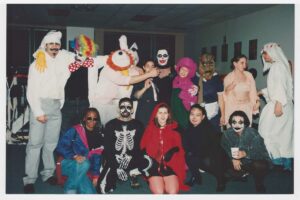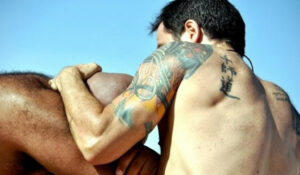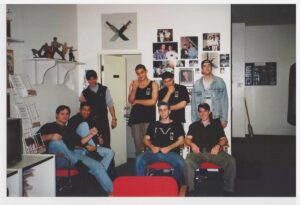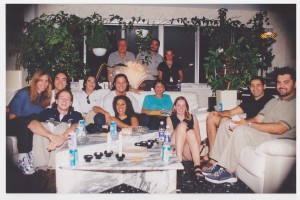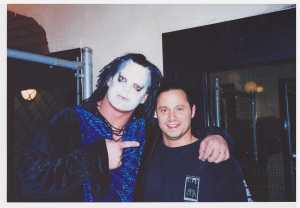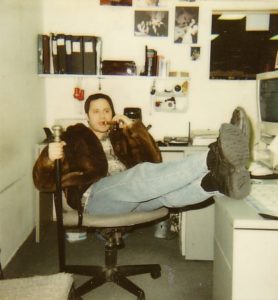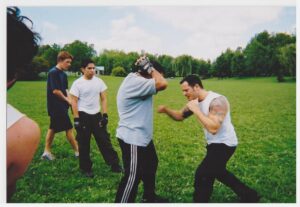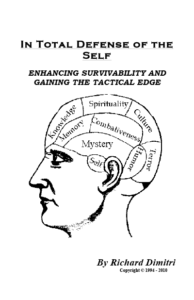Having trained in Krav Maga and several other arts, I can say that Senshido is the most realistic, eye opening system I have ever trained in. Spending one weekend training with Richard and the Senshido crew was enlightening to say the least. (Circa: 1998)
Robert Toscano - New York, Bronx
Senshido
Heavily influenced by Bruce Lee and Dan Millman (Author of Peaceful Warrior series), the following definition of Senshido was the first original definition I'd ever written in mid 1994 for the very first Senshido website designed by Senshido student and friend, Anthony Lukban.
It can clearly be seen here that from the very beginning, I had no intention of ever systemizing this process, where, over a quarter of a century ago, I clearly state that Senshido was but a process of discovery and how true I've remained to this journey and method until today.
Change is imperative. Change also implies evolution. However, in the martial arts field change is taboo. Instead of passively agreeing with the traditional arts that pass themselves off as methods of self-defense, we questioned and researched. Instead of accepting the inherited misconceptions that are continuously presented to us daily; we innovated and progressed. Rather than bending to the egos of the political forces behind the martial arts community, we like few before us have broken from tradition. Blindness and self inflicted myopia is nothing but laziness contrived by an ignored ignorance. Senshido is change.
Senshido has never catered to the traditions that in some ways plague the martial arts in so far as survival is concerned, but rather expanded into progression and innovation. We have a mission statement and have stuck by it since the beginning. Since 1994, Senshido has become quite controversial both in the traditional realm and the eclectic circles as well. We have attracted international attention and secured ourselves as one of the top 5 reality based systems in the world.
Senshido’s goals and values are congruous with the warrior values that drove men to seek ways to protect themselves, their families, clans and villages against danger centuries ago. The oldest or first documented form of fighting was discovered in ancient Egypt and was scripted on the pyramid walls around 4000 to 5000 BC. These combative disciplines which as far as we know started from the Egyptians and broadened onto the Romans, the Greeks, the Chinese and so on, were used purely as methods of warfare and self-defense. Those were the values that originally created the fighting systems around the world, not tournaments or inspirations of championships.
In order to avoid confusion, let me define and note the differences between martial arts ‘systems’ and ‘styles’. Styles are specific types of expressions which have been passed on from teacher to student, generation to generation and transmitted identically to each individual regardless of their differences as human beings. There is neither evolution nor practicality in styles since their foundations are theoretical. To mimic without thought is the way. A system is usually comprised of several styles to form a more complete art which in turn evolves and progresses with the obvious need to adapt. Some systems however never progress and eventually become styles. Some factions of Jeet Kune Do are a good example of a methodology turned into a system turned into a style.
Senshido, if necessarily labeled, is closer to being a system but is really neither a system, nor a style. It is a process, a methodology that is transcendental, interchangeable and adaptable to all systems and styles. Although it does contain many modified physical attributes that have been inspired by other systems; it is comprised of several original, unique and innovative methods.
Creating a new martial art system is not just a question of mish-mashing several arts together for the sake of eclectics as many have done since it has become fashionable to do so from the coming of MMA and NHB events. It takes scientific exploration of each combative strategy as well as an in depth comprehension of emotional inertia and its effects on the reactive mind as well as taking into consideration the entire myriad’s of variables that can come into play before, during and after a fight.
No pure styles make up Senshido. From a physical perspective, we mainly rely on gross motor skills and Senshido's 5 Principals of Physical Retaliation: Primary Targets - Closest weapon to Closest Target - Tactile Sensitivity - Economy of Motion - Non Telegraphic Movement. No range of fighting, style or technique has ever won a fight.
Survival is credited to the fighter’s mindset that allowed him to walk away a survivor. The actual technique, style or range is completely coincidental. It used to be that martial artists would cling to their styles and develop an emotional attachment to it, nowadays it’s become ranges and techniques instead since the coming of the NHB events. Techniques are not as important as the philosophy and mental reasoning behind them. Logic and reason guide the individual. Simplicity, directness and efficiency backed by strategy are the ingredients to success in combat and defense.
My students understand that Senshido’s sole concern is enhancing survivability. They realize the journey towards self-confidence and truth lies solely within themselves and that Senshido is but a guide or vehicle towards that truth. In combat, you will do what you will do. The truth, in a world of self-created conceptualizations and instilled beliefs, appears harsh and remains for the most part unexplored. Change is imperative but frightens most. Blindness or refusal to see is a very common affliction amongst martial artists, which in turn creates dis-ease in the form of hidden insecurity in their ability. For the most part, this insecurity manifests itself as ego and arrogance.
The narrow minded and fearful of questioning, those who merely accept because "that’s the way it has always been done" and the too lazy to introspect succumb to their own fate. As Marc Macyoung states, "It’s their blood". The fight happens but once. To look back at it and say "I should, would or could have" is futile unless it is done with introspection as a learning tool for the next possible encounter. The various mind-sets that influence our every day decision making are usually quite predictable and for the most part, problematic and becomes even more so during combat.
The mind (not brain), with all it's unsought yet self induced imperfections like mental fatigue, doubt, fear, anger and anxiety create optimum performance hesitation resulting in emotional inertia which in turn manifests itself as physical dis-ease. We create our own hells and hang on to it with no apparent logic as to why - a matter of 'uncomfortable comfortableness'. Resistance is futile. Unfortunately, combative tactics only change after a severe and harmful event. Unfortunately too late, that is a mistake that have caused some their lives.
So if anything, Senshido exists to make you question, introspect and search for a better way. It is a form of truth. Do not label, crystallize or solidify it. Take from it what you need, use what works for you, modify what doesn’t and begin your own journey. Nobody owns the truth; it is out there for everyone to seek, study and use as they may.
Be it through literature, debate, casual conversation or teachings, to hold one’s opinion speaks of quiet reservations. Styles, systems, labels, titles, religions, cults place you in a faction. Factions limit people to knowledge within itself. As Bruce Lee Prophetically said "He who is without style adapts to all styles". I write this piece for the inquisitive and narrow-minded. My words may disturb but they lead to sought reactions. We’ve said what we meant and we’ve never pretended as so many others do intending just to please, if we condemned your point of view, ask yourselves… why?
Train intelligently and diligently.
Richard Dimitri
Founder of Senshido


